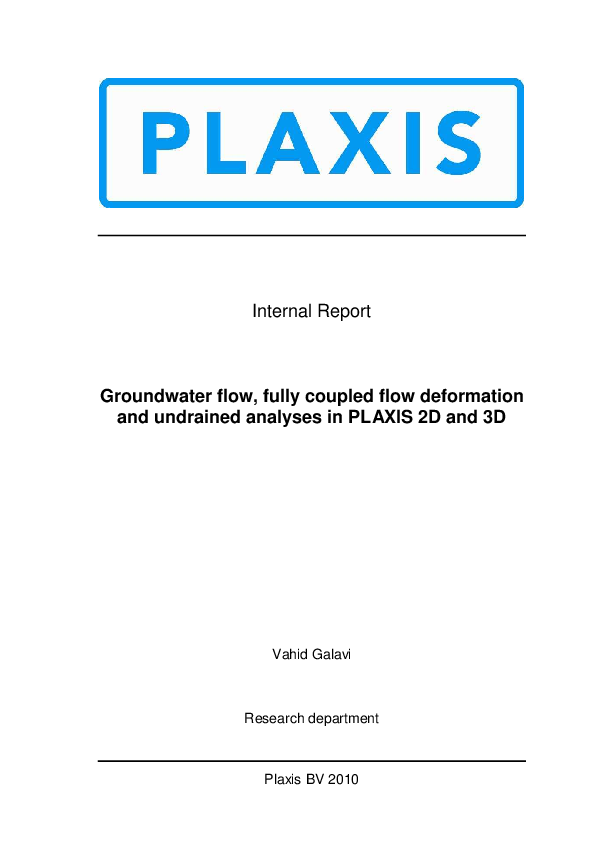

Values of interface friction angle and adhesion are generally not the same as the friction angle and cohesion of the surrounding soil.Įlastoplastic spring elements are used to model anchors and struts. For example, these elements may be used to simulate the thin zone of intensely shearing material at the contact between a tunnel lining and the surrounding soil. Joint elements are available to model soilstructure interaction. Hinges may be introduced to create joints where plate ends can rotate freely, or with rotation springs for connections that are neither pinned nor fully fixed. Plates with interfaces may be used to perform realistic analyses of geotechnical structures.Ī hinge is a connection that allows for a discontinuous rotation in the point of connection (joint). A plastic hinge may develop for elastoplastic plates, as soon as the ultimate moment is mobilised. The behaviour of these elements is defined using a flexural rigidity, an axial stiffness and an ultimate bending moment. Special plate elements are used to model the bending of retaining walls, tunnel linings, shells, and other slender structures. Quadratic 6-node and 4th order 15-node triangular elements are available to model the deformations and stresses in the soil. The mesh may contain thousands of elements. Plaxis allows for fully automatic generation of unstructured finite element meshes with options for global and local mesh refinement. From this geometry model, a 2D finite element mesh is easily generated. This is not the behaviour displayed in PLAXIS 2D 2016.00.The input of soil layers, structures, construction stages, loads and boundary conditions is based on convenient CAD drawing procedures, which allows for a detailed modelling of the geometry cross-section. Similarly, in Figure 2 the axial force should be the lowest at the top and gradually increase downwards due to the self weight of the concrete of the side drift. The correct behaviour should display a bending moment at the top and bottom of the line. In Figure 1 the bending moment line generated from the automatic centerline shows no bending moment at the top and bottom of the side drift, which is incorrect as all connections are rigid in this tunnel case.
#HOW TO APPLY BACK PRESSURE PLAXIS 2D MANUAL#
Incorrect normal force values calculated with automatic centerline (left) and correct values with manual centerline (right) Incorrect bending moments calculated with automatic centerline (left) and correct values with manual centerline (right)įigure 2. In 2016.00, the automatic centerline might not detect the structural forces correctly for an internal tunnel lining connected to concrete elements at the end points.įor example, the axial forces and the bending moments might be incorrect, as shown Figure 1 and Figure 2.įigure 1.
#HOW TO APPLY BACK PRESSURE PLAXIS 2D PRO#
Pro tip: Temperature vs time shows latent heat plateau For this tutorial, when pre-selecting a node in the middle of the model, the temperature versus time plot shows the phase change plateau displayed below: Due to the latent heat kicking in, we should see the temperature plateau characteristic of ground freezing. When performing a ground freezing analysis, it is good practice to check that the phase transition from liquid water to ice has been properly triggered. Updated Figure 16.8 for PLAXIS 2D 2016.01 Pro tip Updated Figure 16.7 for PLAXIS 2D 2016.01 Updated Figure 16.6 for PLAXIS 2D 2016.01 They are shown below, and as you can see, they are hardly noticeable. They however bring some slight changes in the results of tutorial 16. Many improvements have been made to the convection-diffusion implementation, in particular in terms of calculation stability and performance. Updated Figure 15.18 for PLAXIS 2D 2016.01 Tutorial 16: Freeze pipes in tunnel construction Updated Figure 15.17 for PLAXIS 2D 2016.01 See section 2.3 of our document on thermal and coupled THM analysis for more details. The thermal expansion of liquid water plays a role in excess pore pressures and groundwater flow, but not directly in the displacements. In 2016.00, the thermal expansion of water was contributing to the thermal strain of the soil body, which is incorrect: the displacements are only governed by the thermal expansion of the soil skeleton. Tutorial 15: Thermal expansion of a navigable lock


 0 kommentar(er)
0 kommentar(er)
